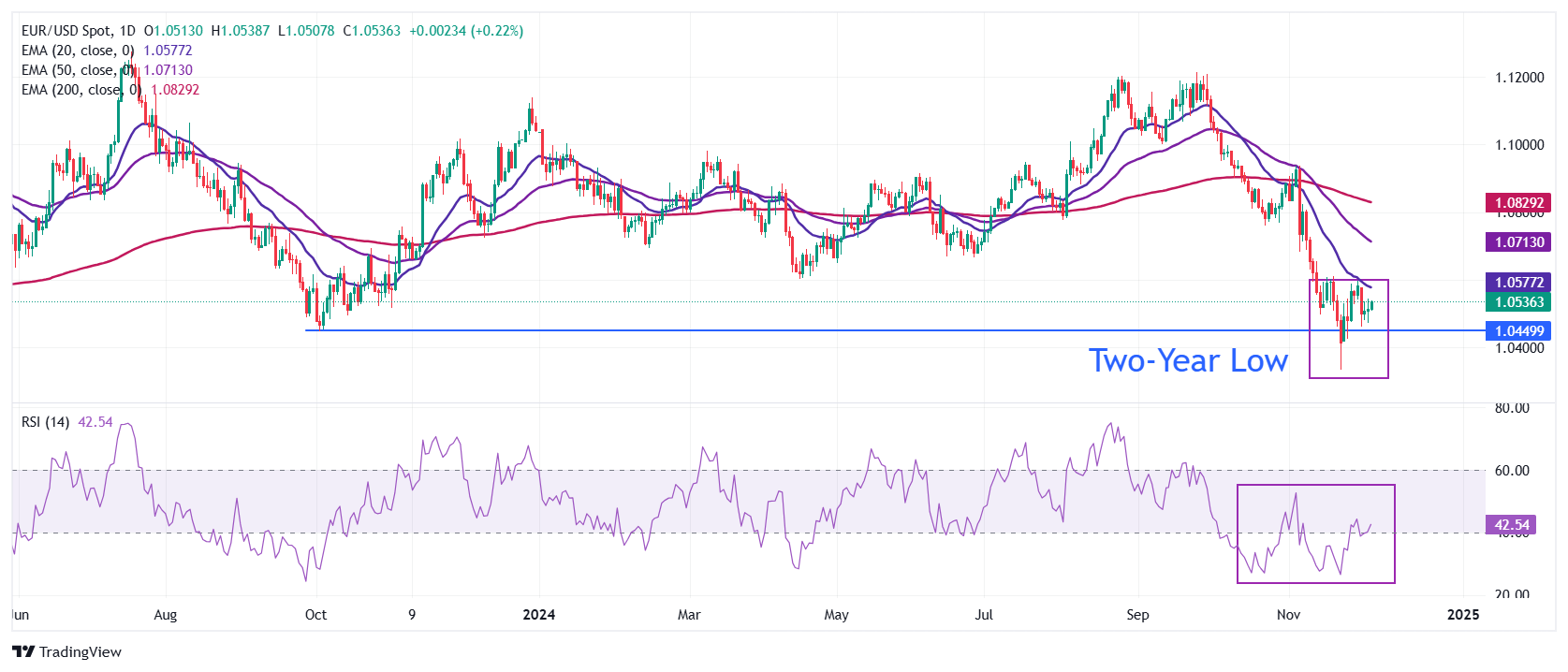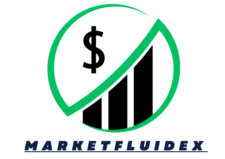- EUR/USD sustains above 1.0500 whereas the French political disaster retains the pair on tenterhooks.
- The ECB is anticipated to chop its Deposit Facility Price by 25 bps to three% subsequent week.
- Buyers await the US NFP information for recent interest-rate steerage.
EUR/USD beneficial properties larger on the US Greenback’s (USD) expense. The US Greenback Index (DXY), which tracks the Buck’s worth in opposition to six main currencies, falls however holds the rapid help of 106.00. The Buck trades with warning forward of the USA (US) Nonfarm Payrolls (NFP) information for November, which will probably be launched on Friday.
Economists anticipate the US economic system to have added 200K recent employees, considerably larger than the rise of 12K seen in October. The NFP report acknowledged that payroll employment estimates in some industries had been affected by the hurricanes final month. The Unemployment Price is estimated to have elevated to 4.2% from the previous launch of 4.1%. Buyers may even pay shut consideration to the US Common Hourly Earnings information to get cues in regards to the present standing of wage development.
The official employment information will affect market expectations for the Federal Reserve (Fed) rate of interest path. In the meantime, Fed Chair Jerome Powell has supported a extra gradual rate of interest reduce tempo on the again of improved labor demand, rising financial development, and a slight acceleration in worth pressures. “The US economic system is in remarkably fine condition, and there’s no motive it could actually’t proceed,” and ” the excellent news is that we will afford to be somewhat extra cautious as we attempt to discover impartial,” Powell mentioned on the New York Occasions DealBook Summit on Wednesday.
For the December assembly, there’s a 77% likelihood that the Fed will cut back rates of interest by 25 bps to 4.25%-4.50%, whereas the remaining anticipate the Fed to depart them unchanged, in accordance with the CME FedWatch software.
Every day digest market movers: EUR/USD strikes larger regardless of French authorities fallout
- EUR/USD ticks larger and strives to remain above 1.0500 in North American buying and selling hours on Thursday. The most important forex pair beneficial properties barely as traders try to maneuver ahead from the already anticipated collapse of a mere three-month-long Michel Barnier’s authorities after dropping a no-confidence vote proposed by the Far Proper and Left-wing coalition.
- The demolition of the French authorities has put the economic system right into a a lot deeper disaster by limiting its capability to tame the burgeoning fiscal deficit. Far-right and left-wing lawmakers backed a no-confidence movement in opposition to Barnier after claiming the funds from his authorities was “flawed and dangerous” to French individuals. The funds in query proposed €60 billion in tax will increase and spending cuts geared toward addressing France’s ballooning deficit, in accordance with Firstpost.
- Earlier than the no-confidence vote, Barnier appealed to lawmakers, “This actuality is not going to disappear by the magic of a movement of censure.” He added the funds deficit would come again to hang-out whichever authorities comes subsequent.
- French political turmoil has sophisticated the highway forward for the already-troubled Eurozone, which is dealing with extreme draw back dangers to financial development because of weak demand and potential tariffs as soon as the brand new US administration of President-elect Donald Trump takes workplace. In the meantime, month-to-month German Manufacturing facility Orders declined in October however at a slower-than-expected tempo. The financial information contracted by 1.5% after rising 7.2% in September. Economists anticipated the Manufacturing facility Orders information to have declined by 2%.
- European Central Financial institution (ECB) President Christine Lagarde additionally warned about rising dangers to the buying and selling bloc in her testimony earlier than the Parliamentary Committee on Wednesday. “The medium-term financial outlook is unsure, nevertheless, and dominated by draw back dangers,” Lagarde mentioned. “Geopolitical dangers are elevated, with rising threats to worldwide commerce,” she added.
- On the rate of interest outlook, Lagarde sticked to her data-dependent method. Nevertheless, merchants anticipate that the ECB will reduce its Deposit Facility Price by 25 foundation factors (bps) to three% at its December 12 assembly.
Technical Evaluation: EUR/USD ranges close to 1.0500

EUR/USD continues to wobble across the psychological determine of 1.0500. Nevertheless, the outlook of the main forex pair stays bearish as all short-to-long-term day EMAs are declining, pointing to a draw back pattern.
The 14-day Relative Power Index (RSI) rebounded after situations turned oversold and climbed above 40.00, suggesting that the bearish momentum has light. Nevertheless, the bearish pattern has not been extinguished.
Trying down, the November 22 low of 1.0330 will probably be a key help for Euro bulls. On the flip facet, the 50-day EMA close to 1.0750 would be the key barrier for the Euro bulls.
ECB FAQs
The European Central Financial institution (ECB) in Frankfurt, Germany, is the reserve financial institution for the Eurozone. The ECB units rates of interest and manages financial coverage for the area. The ECB major mandate is to keep up worth stability, which implies conserving inflation at round 2%. Its major software for reaching that is by elevating or reducing rates of interest. Comparatively excessive rates of interest will often lead to a stronger Euro and vice versa. The ECB Governing Council makes financial coverage choices at conferences held eight occasions a yr. Choices are made by heads of the Eurozone nationwide banks and 6 everlasting members, together with the President of the ECB, Christine Lagarde.
In excessive conditions, the European Central Financial institution can enact a coverage software referred to as Quantitative Easing. QE is the method by which the ECB prints Euros and makes use of them to purchase property – often authorities or company bonds – from banks and different monetary establishments. QE often ends in a weaker Euro. QE is a final resort when merely reducing rates of interest is unlikely to realize the target of worth stability. The ECB used it in the course of the Nice Monetary Disaster in 2009-11, in 2015 when inflation remained stubbornly low, in addition to in the course of the covid pandemic.
Quantitative tightening (QT) is the reverse of QE. It’s undertaken after QE when an financial restoration is underway and inflation begins rising. While in QE the European Central Financial institution (ECB) purchases authorities and company bonds from monetary establishments to supply them with liquidity, in QT the ECB stops shopping for extra bonds, and stops reinvesting the principal maturing on the bonds it already holds. It’s often constructive (or bullish) for the Euro.
